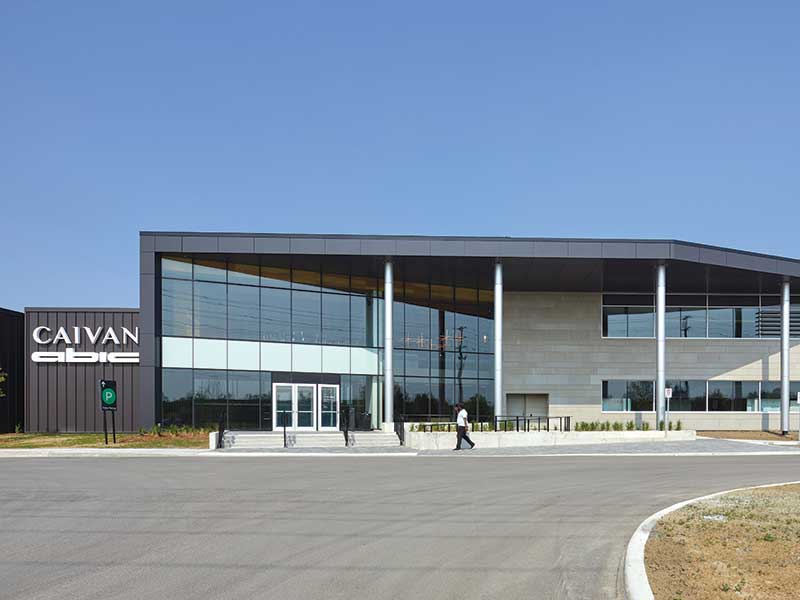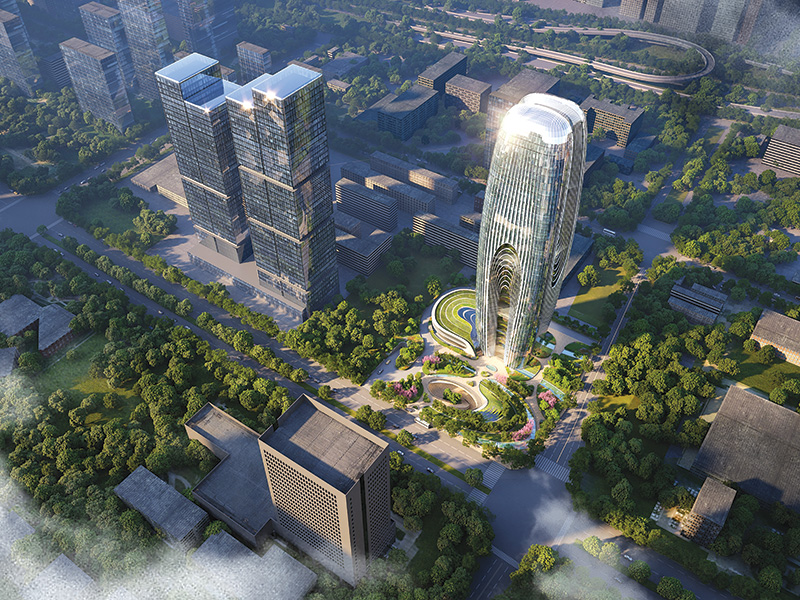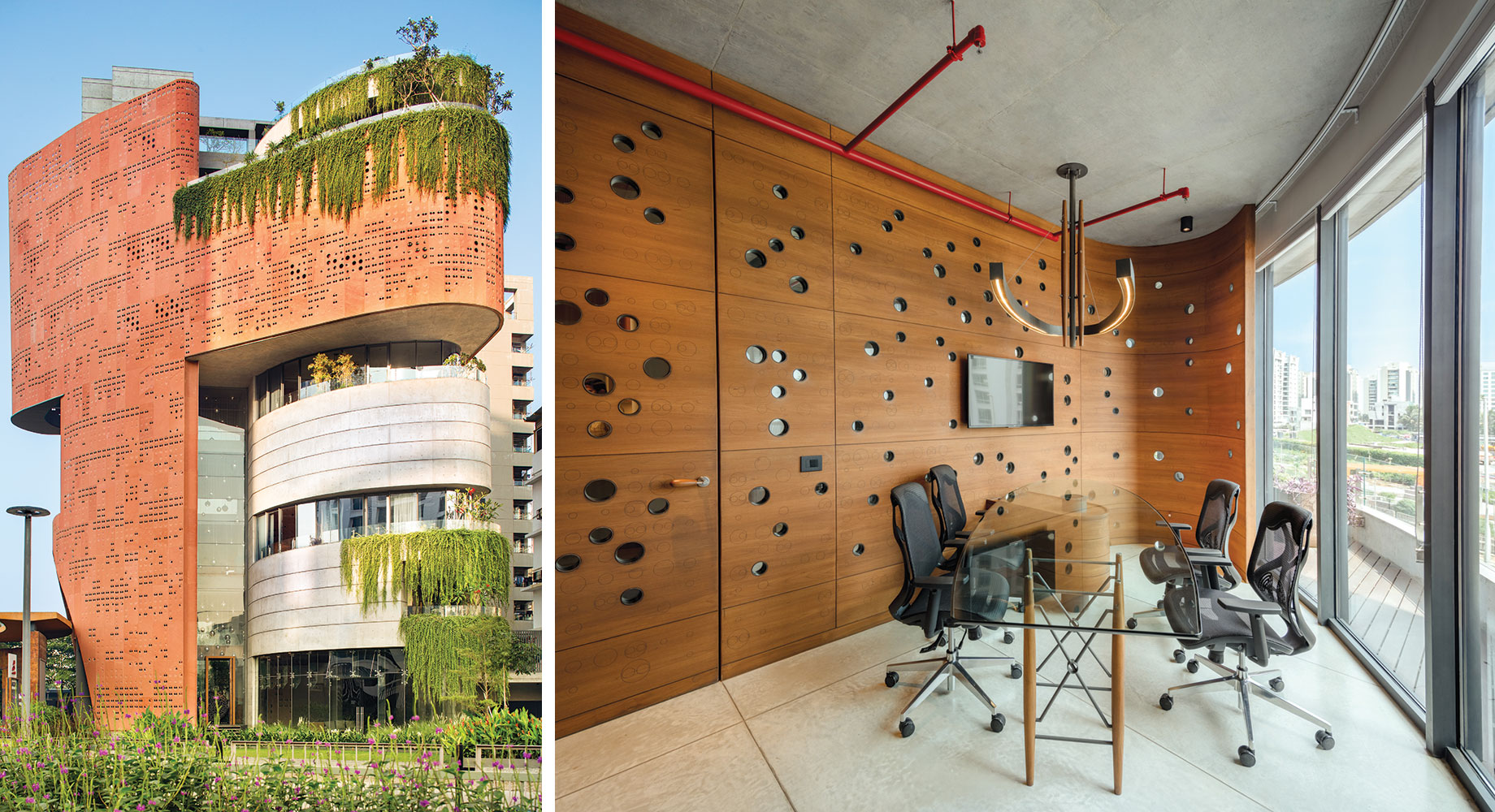
Fact File
Typology: Commercial
Location: Surat, Gujarat
Site Area: 8,300 sq.ft
Built-Up Area: 26,749 sq.ft
Architecture: Urbanscape Architects & Utopia Designs
Interior Design: Utopia Designs
Landscape Design: I Design
Start Date: 2016
Completion: 2019
Photographer: Noughts and Crosses LLP | Andre Fanthome
Material Palette
Glass: Saint Gobain & AIS
Concrete: Gujarat Sidhee Cement
Sanitaryware: Kohler
Fittings: Cera-Duravit
Furniture: Utopia Designs
Air Conditioning: Mitsubishi Electric
Paint: ICA Italia, Asian Paints, AkzoNobel
ACP: Aludecor
Structural: Sai Consultants
Electrical: Abtech Electricals
Façade Stone: Odyssey Stone
Lighting consultant: Mandala Consultants
Facade Lighting: Lumenatix
HVAC: DBHMS - JAY AIR (Mitsubishi Electric)
Plumbing: DBHMS
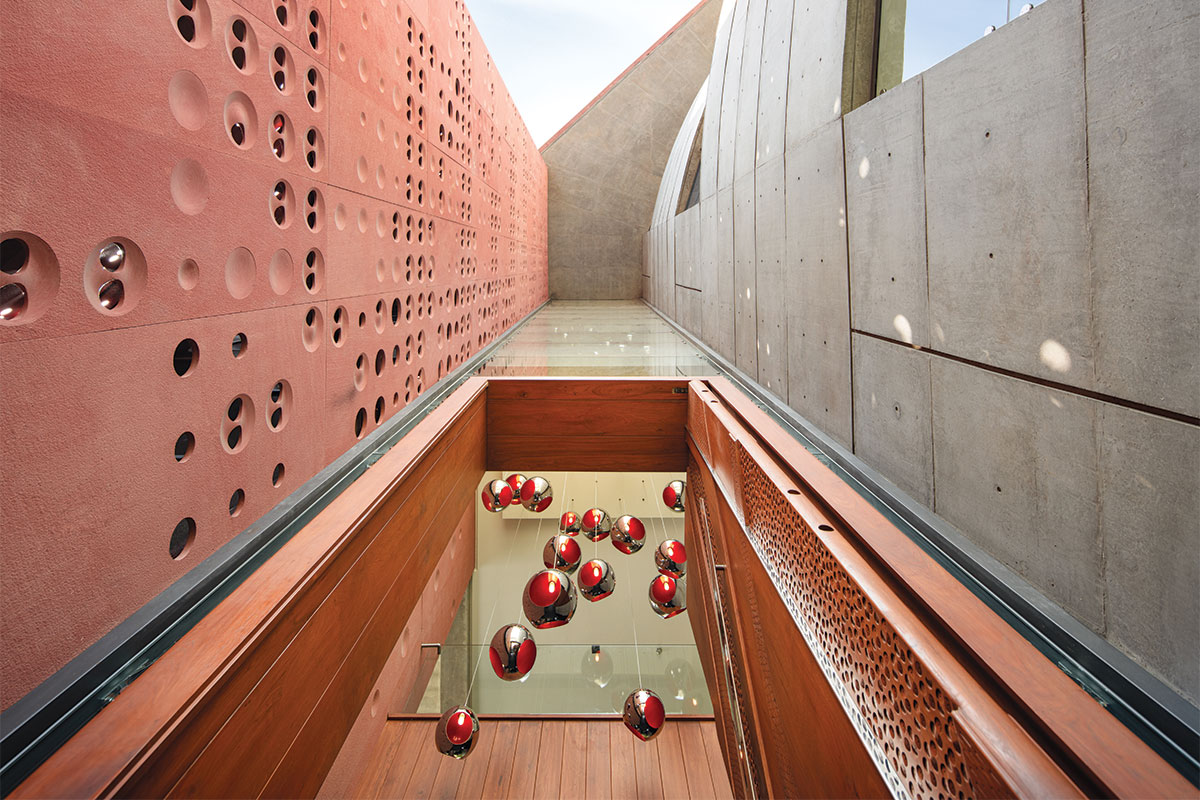
This office building of the Sangini Group characterizes new strategies for a flexible column-free office space that creates a new urban venture in the city’s dense business district. Established in 1984, the Sangini Group is a leading construction firm delivering technical excellence in building design for habitats and commercial spaces. The site for their new office building is located on the city’s Canal Road. The areas on the Vesu–Canal corridor are re-developed, and the roads are newly constructed. The scheme is envisioned as an upcoming real-estate epicentre, providing a revived infrastructure and a healthy lifestyle for its inhabitants.
The eight-storied office building reflects an innovative design. The irregular site with mandatory setbacks offered the opportunity of a triangular footprint. Conceptualising the design as a sculptural manifestation, the initial design ideas were developed as a work of art that would challenge the archetypal structural systems and the notion of a building, while showcasing the ethos of the Sangini brand, its capability and expertise in the developer domain.
The design intent was to create a dynamic built volume that would encourage the visitor to come into the space and the building. As a result, cantilevered floor plates that defy the conventional grid structure with post-tensioned sweeping floors have been cast along with exposed concrete walls that are structural in nature. Bearing in mind the cantilever’s scale, alternate floors have been intentionally connected with sheer walls, resulting in each floor acting as a single beam, with the functions shuffled accordingly. This exercise led to a column/wall free alternate floor.
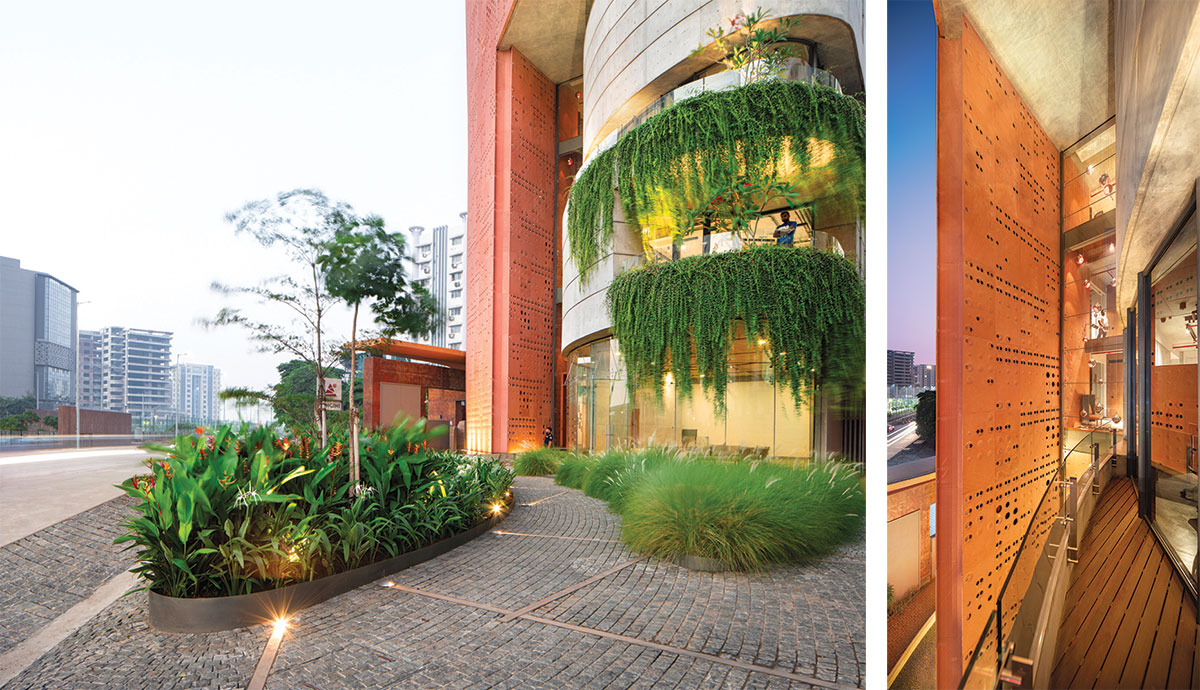
The nature of the family business and the resultant hierarchy plays a crucial role in spatial planning and movement, in order to determine the connections and vertical segregation. Extending the home into the workspace, a personal, sensitive, and conscious experience is created within the building through the hierarchy of spaces and their interconnectivity. A small floor plate results in its segregation from the vertical core that comprises two lifts and a staircase.
Guided by the building’s unusual design, a distinctive profile and an appropriate orientation adopted through sun path analysis, the environmental strategy exploits the various factors to enable programmatic and functional success. The stone skin with three dimensional perforations envelopes the core and provides shade from the harsh sunlight of the south and west throughout the day. The skin wraps around on the fifth and sixth floor to unify the structure and create an inviting and invigorating volume of the five-floor high entrance.
The entrance is where the private world of the tower meets the public realm and this soaring light filled space tones down the scale, making it look proportionate to the floor plate. The voluptuous space of the eight storied structure transforms visibly into a five storied structure, a warmer, more approachable and composed space.
The Sangini House stands as a testament to the brand’s values, designed in response to context, heritage, and functionality. Together with the highly efficient services equipment and systems in the building and the façade design that is integral to the energy strategy, the building aims to achieve a Platinum green rating
Principal Architect Dinesh Panwar
From the entrance, the visitor is directed along the sweeping skin into a double height atrium which opens into a court. Daylight is drawn into the various office levels and down through the building via the atrium. Other active means of energy systems in the building include rainwater harvesting and drip irrigation systems, which are used to optimize water consumption, radiant floors, and ventilation systems.


